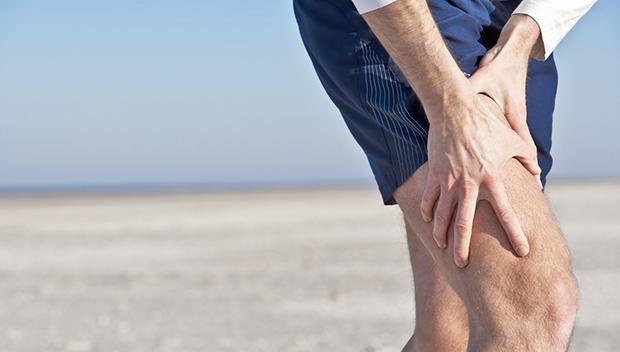
I regularly get notes from triathletes, road racers and mountain bike riders asking, "How can I prevent inner thigh cramps on the bike? These cramps were so awful, I nearly had to get off the bike—I couldn't pedal! Please help me; I don't ever want this to happen again."
Causes of Cramping
Before we can address preventing muscle cramps in thighs, first we have to know the cause. Unfortunately, it's difficult to know the exact cause of exercise-induced muscle cramps, and there is disagreement among experts, but here are the most common explanations:- Dehydration
- Electrolyte imbalance (diluted electrolytes pre-race or not consuming any electrolyte tablets or a drink containing electrolytes during the race)
- The athlete is under-trained and not prepared for the event
- Racing in very hot and humid conditions
- Race efforts are higher than those produced training (endurance is solid, high pace is lacking in training)
- The race course is very hilly compared to training courses
- Race-day stress
More: 6 Causes of Muscle Cramps
Low Electrolytes and Dehydration
A couple of researchers have theorized that muscle cramps associated with exercise are not caused by dehydration or electrolyte depletion. Schwellnus out of South Africa looked at a series of 18 cases and one small (n=10) case-control study. The conclusion was that "altered neuromuscular control" is the cause of cramps, but they decided more research was needed to verify this result.In a second research paper Schwellnus, Collins and Shang studied 433 Ironman participants. The participants were divided into two roughly equal groups, those with a history of cramps and those with no history of cramping. What the researchers found is that exercise muscle cramping was associated with exercising at a higher intensity during the race, an inherited risk (they had a family history of cramping) and they had a history of tendon and/or ligament injury.
This research was later confirmed in another study that examined 210 Ironman triathletes. Out of the 210 triathletes, 43 reported cramping and 166 had no cramps. Researchers found there were no significant differences between the groups in the pre-race or post-race serum electrolyte concentrations or body weight changes.
Cramps were associated with faster self-predicted race times and faster actual race times. Regression analysis found that faster overall race time, cycling time in particular, and a history of cramping were the only two independent factors linking those with cramps.
More: 5 Hydration Tips for Triathletes
Tight Muscles
Early research done by Schwellnus, Derman and Noakes in 1997 theorized that cramps were potentially caused by spinal reflex activity that causes local muscle fatigue. This activity spurs the Golgi tendon reflex, which protects skeletal muscle from excessive loads. Passive stretching appears to relieve the Golgi tendon organ and therefore relieves cramping.
Beyond Research
Cyclists that have experienced cramping have reported relief from the cramps by consuming fluids, ingesting electrolyte tablets, stretching, and decreasing pace. It is not known at this time whether simply stretching and/or decreasing pace alone would resolve cramping.


